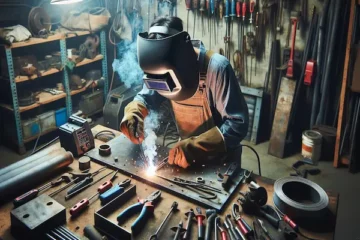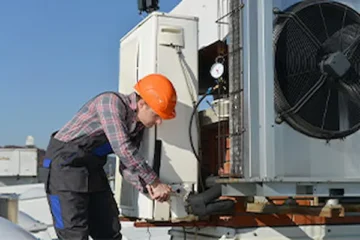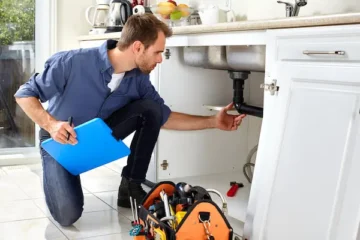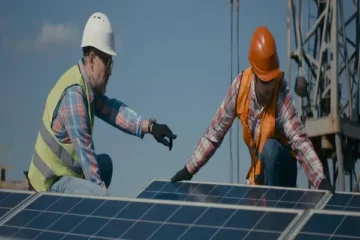Electrical Power Systems (free audit)
Audit free and self-paced. Generation, transmission, distribution.
Anúncios
And grid basics with trusted content.
Master Grid Operations and Energy Distribution Fundamentals
Learning about electrical power systems has never been more accessible.
You can now take comprehensive electrical power systems courses online for free through major universities and educational platforms like MIT OpenCourseWare, Coursera, and the University of Melbourne.
These courses cover everything from basic electrical principles to advanced grid operations.
These free programs teach you the same material found in college engineering courses.
You will learn about power generation, transmission lines, distribution networks, and safety procedures.
Many courses also cover modern topics like renewable energy integration and smart grid technology.
The courses range from beginner-friendly introductions to specialized topics like power system protection.
You can study at your own pace and access video lectures, reading materials, and practice exercises. Some platforms offer certificates when you complete the coursework successfully.
Key Takeaways
- Free online courses from top universities teach electrical power systems fundamentals and advanced concepts
- You learn practical skills in power generation, transmission, distribution, and modern renewable energy systems
- Many programs offer certificates and cover essential safety practices for electrical engineering careers
Overview of Free Electrical Power Systems Courses Online
Free online electrical power systems courses teach you the basics of power generation, transmission, and distribution systems.
Major platforms like Coursera and MIT offer comprehensive programs that can lead to career certificates in electrical engineering.
What to Expect from Online Power Systems Courses
Free power systems courses cover the core concepts you need to understand electrical grids.
You’ll learn about power generation methods, transmission lines, and distribution networks.
Most courses start with basic electrical theory.
They then move into more complex topics like grid operations and system protection.
Common course topics include:
- Electric power generation fundamentals
- Transmission and distribution systems
- Grid stability and control
- Power system analysis methods
- Safety standards and industry policies
You’ll study how electricity moves from power plants to your home.
The courses explain transformers, switchgear, and protective devices.
Many programs include hands-on exercises.
You might analyze real power system problems or design basic electrical networks.
Leading Providers and Course Platforms
Several trusted platforms offer quality power systems education.
Coursera provides industry-standard courses that teach electrical utility policies and technical vocabulary.
MIT OpenCourseWare offers free access to their Introduction to Electric Power Systems course.
This covers electrical to mechanical energy conversion and industrial applications.
Top course providers:
- Coursera – Industry-focused programs with certificates
- MIT OpenCourseWare – Academic-level courses
- University of Melbourne – Power and energy specializations
- Alison – Power system protection courses
These platforms give you video lectures, reading materials, and practice exercises.
Some courses let you interact with instructors and other students.
Earning a Career Certificate
Many free courses offer certificates when you complete the program.
A career certificate shows employers that you understand power systems basics.
Coursera provides certificates for their electrical power systems courses.
These certificates link to your LinkedIn profile and resume.
Certificate benefits:
- Proof of completed training
- Resume enhancement
- Professional credibility
- Career advancement opportunities
Some certificates require you to pass quizzes and final exams.
Others just need you to complete all course modules.
The certificates don’t replace formal electrical engineering degrees.
But they show you have practical knowledge of power systems concepts.
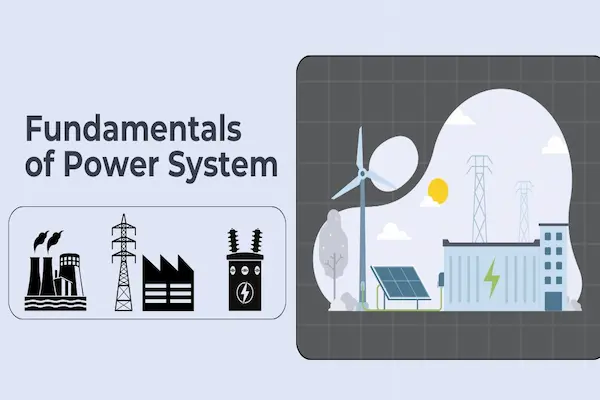
Fundamentals of Electricity and Circuits
Electric charge creates all electrical effects through the movement of electrons between atoms. Basic circuits control this movement to create useful power systems that operate electronic devices and equipment.
Nature and Effects of Electricity
Electricity is the flow of electrons through materials called conductors. These tiny particles carry negative electric charge and move from atom to atom.
When electrons flow in the same direction, they create electric current. This current can power lights, motors, and electronic devices.
Key electrical effects include:
- Heat generation in resistors and heating elements
- Magnetic fields around current-carrying wires
- Chemical reactions in batteries and electroplating
- Light production in bulbs and LEDs
Materials react differently to electricity. Conductors like copper and aluminum allow easy electron flow. Insulators like rubber and plastic block current movement.
Temperature affects how well materials conduct electricity. Most metals conduct better when cool and resist more when heated.
Understanding Electric Charge
Electric charge is a basic property of matter that creates electrical forces. All atoms contain positively charged protons and negatively charged electrons.
Two types of electric charge exist:
- Positive charge – found in protons
- Negative charge – found in electrons
Objects become electrically charged when they gain or lose electrons. Adding electrons creates negative charge. Removing electrons leaves positive charge.
Opposite charges attract each other strongly. Like charges push away from each other with equal force.
The amount of charge is measured in units called coulombs. One coulomb equals about 6 billion billion electrons moving together.
Charge cannot be created or destroyed. It only moves from one object to another during electrical processes.
Static Electric Charge and Simple Circuits
Static electric charge builds up on objects when electrons cannot flow freely. This happens when you rub materials together or walk on carpet.
Lightning shows static electricity in nature. Clouds gather huge amounts of charge that jump to the ground as powerful sparks.
Simple circuits need three basic parts to work properly. A power source like a battery provides energy. Wires create a path for current to flow. A load like a light bulb uses the electrical energy.
Circuit components include:
- Battery or power supply
- Connecting wires
- Switch to control current
- Load device (bulb, motor, resistor)
Current flows in a complete loop from the positive battery terminal through the circuit back to the negative terminal. Breaking this path stops the current flow immediately.
Electronics in Power Systems
Electronics control and manage electricity in power systems using special devices. These components can switch, amplify, or change electrical signals.
Semiconductors like silicon form the heart of electronic devices. They conduct electricity better than insulators but worse than pure conductors.
Common electronic components:
- Diodes that allow current in one direction only
- Transistors that act like electronic switches
- Capacitors that store electrical energy temporarily
- Integrated circuits with thousands of tiny components
Electronic controls make power systems safer and more efficient. They can automatically shut off power during problems or adjust voltage levels as needed.
Modern power grids use computer systems to monitor electricity flow. These electronics help prevent blackouts and balance power supply with demand across large areas.
Essential Components of Electric Power Systems
Electric power systems rely on several key components that control, protect, and manage electrical energy flow. Transformers change voltage levels, switches and circuit breakers provide protection and control, and electromechanical devices convert energy between electrical and mechanical forms.
Transformers and Their Functions
Transformers are devices that change voltage levels in electric power systems. They step voltage up or down without changing the frequency of the electricity.
Step-up transformers increase voltage for long-distance transmission. This reduces energy loss over power lines. You’ll find these at power plants where electricity begins its journey.
Step-down transformers reduce voltage for safe use in homes and businesses. They bring high transmission voltages down to usable levels like 120V or 240V.
Transformers work through electromagnetic induction. They have two coils of wire wrapped around an iron core. When electricity flows through the primary coil, it creates a magnetic field that induces voltage in the secondary coil.
Distribution transformers are the most common type you see. These cylindrical units sit on utility poles or in underground vaults. They serve neighborhoods and individual buildings.
Switches and Circuit Breakers
Switches control electrical flow in power systems. Circuit breakers protect equipment and people by stopping electricity during dangerous conditions.
Manual switches let operators control power flow by hand. You’ll see these at substations and control panels. They isolate equipment for maintenance and repairs.
Automatic switches operate without human input. They respond to electrical conditions like voltage changes or system faults.
Circuit breakers are special switches that open automatically during problems. They detect overcurrent, short circuits, and ground faults. When they trip, they stop dangerous electrical flow in milliseconds.
Air circuit breakers use air to stop the electrical arc when they open. Oil circuit breakers use special oil for the same purpose. Vacuum circuit breakers operate in sealed vacuum chambers.
Electromechanical Devices in Power Systems
Electromechanical devices convert electrical energy to mechanical energy or vice versa. These components are essential for power generation and motor applications.
Generators create electricity from mechanical motion. Steam turbines, wind turbines, and water wheels turn generators to produce power. Most generators use rotating magnetic fields to create electricity.
Motors do the opposite job. They turn electricity into mechanical motion. Electric power systems use motors for pumps, fans, and other equipment at power plants and substations.
Relays are protective devices that detect electrical problems. When they sense dangerous conditions, they send signals to circuit breakers to open. This protects expensive equipment from damage.
Synchronous condensers help control voltage and power factor in the system. These rotating machines look like motors but don’t drive any mechanical load.
Transmission, Distribution, and Grid Infrastructure
The electrical grid moves power from generators to your home through transmission lines that carry high voltage electricity and distribution systems that deliver lower voltage power. Underground cables and overhead lines form the physical pathways, while substations transform voltage levels for safe delivery.
Transmission Paths and Overhead Lines
Transmission lines carry electricity at high voltages from power plants to substations. These lines use voltages between 69,000 and 765,000 volts to move large amounts of power over long distances.
Overhead lines are the most common type of transmission path. They use tall towers or poles to hold power cables above ground. The cables are made of aluminum or copper and hang between structures.
Key components of overhead transmission include:
- Steel or concrete towers
- High-voltage conductors
- Insulators to prevent electrical faults
- Guy wires for structural support
The higher the voltage, the less power is lost during transmission. This makes high-voltage lines more efficient for moving electricity across states or regions.
Weather can damage overhead lines. Ice storms, high winds, and falling trees cause most power outages. Utilities must maintain clear paths under lines to prevent tree-related problems.
Underground Cables in Power Distribution
Underground cables carry electricity below ground through buried conduits or direct burial systems. These cables are more expensive than overhead lines but offer better protection from weather.
Distribution systems use underground cables in cities and neighborhoods. The cables typically carry voltages between 4,000 and 35,000 volts to local transformers.
Underground cable types include:
- XLPE cables – Cross-linked polyethylene insulation
- Paper-insulated cables – Oil-filled for high voltage
- Concentric neutral cables – Built-in grounding system
Underground systems require special equipment like manholes, vaults, and pad-mounted transformers. These allow workers to access cables for maintenance and repairs.
The main benefits are fewer outages from storms and better appearance in neighborhoods. However, underground cables cost 3-5 times more than overhead lines to install.
Substations and High Voltage Equipment
Substations change voltage levels and route electricity through the power system. They contain transformers, switches, and protective equipment that control power flow.
Transmission substations step down high voltage from power lines to lower voltages for distribution. They typically reduce voltage from 138,000 volts to 12,000 volts or less.
Distribution substations serve local areas and neighborhoods. These smaller facilities reduce voltage to levels safe for homes and businesses.
Key substation equipment includes:
- Power transformers for voltage conversion
- Circuit breakers for protection
- Disconnect switches for isolation
- Control systems for remote operation
High voltage equipment must handle extreme electrical stress. Insulators, bushings, and surge arresters protect against lightning and electrical faults.
Substations use computer systems to monitor equipment and control power flow. These systems help prevent blackouts and restore power quickly after outages.
Renewable Energy and Modern Power Systems
Renewable energy sources now power most new electrical plants worldwide, with wind and solar leading the way. Power systems must adapt to handle these clean energy sources while maintaining reliable electricity delivery through smart grid technology.
Hydroelectric Power and Other Renewable Sources
Hydroelectric power uses flowing water to generate electricity through turbines and generators. This renewable source provides steady power output compared to wind and solar energy.
Major renewable energy types include:
- Solar photovoltaic systems – convert sunlight directly into electricity
- Wind turbines – capture wind energy to spin generators
- Hydroelectric dams – use water flow to turn turbines
- Biomass plants – burn organic materials for power
- Geothermal systems – tap underground heat sources
Each renewable source has different benefits. Solar works best during sunny days. Wind power peaks when weather conditions are right.
Hydroelectric power offers the most consistent energy output. Water flow stays more predictable than wind or sunlight. This makes hydroelectric plants valuable for steady electricity supply.
Integration of Renewables into the Grid
Power systems must balance electricity supply and demand every second. Adding renewable energy creates new challenges for grid operators.
Key integration challenges:
- Variable power output from wind and solar
- Need for backup power sources
- Updated transmission lines and equipment
- New control systems for grid stability
You need energy storage systems when renewable output drops. Battery systems store excess solar power during the day. They release this energy when the sun goes down.
Smart inverters help renewable sources connect safely to the power grid. These devices convert DC power from solar panels into AC power that homes and businesses use.
Grid operators use advanced forecasting to predict renewable energy output. Weather data helps them plan for changes in wind and solar power throughout each day.
Smart Grid and Environmental Considerations
Smart grids use digital technology to manage electricity flow more efficiently. These systems communicate between power plants, transmission lines, and your home.
Smart grid features include:
- Two-way communication networks
- Automated control systems
- Real-time monitoring equipment
- Advanced metering infrastructure
Environmental benefits grow as more renewable energy joins the power system. Each solar panel or wind turbine reduces the need for fossil fuel power plants.
Smart grids help reduce energy waste through better monitoring and control. You can track your electricity use in real time. The system automatically adjusts power flow to prevent outages.
Grid modernization supports electric vehicle charging and home battery systems. These technologies work together to create a cleaner energy future.
Power system engineers design these networks to handle both traditional and renewable energy sources reliably.
Safety, Applications, and Career Prospects
Electrical power systems involve serious safety risks that require proper training and safety protocols. These systems power everything from homes to industrial facilities, creating diverse career paths in electrical engineering and related fields.
Electrical Safety Best Practices
Personal protective equipment forms the foundation of electrical safety. You must wear insulated gloves, safety glasses, and arc-rated clothing when working near live circuits.
Always follow lockout/tagout procedures before starting electrical work. This means shutting off power at the source and physically locking the switch in the off position.
Voltage testing should happen before and after any electrical work. Use a properly rated voltmeter to confirm circuits are de-energized. Never assume a circuit is safe without testing.
Ground fault circuit interrupters (GFCIs) protect against electrical shock in wet areas. Install these devices in bathrooms, kitchens, and outdoor locations.
Maintain proper clearance distances from overhead power lines:
- Low voltage (under 50kV): 10 feet minimum
- High voltage (over 50kV): 10 feet plus 4 inches per 1kV
Careers in Electrical Engineering and Power Systems
Power system engineers design and maintain electrical grids that deliver electricity to cities and towns. They earn between $75,000 and $120,000 annually.
Protection engineers focus on equipment that prevents power outages and electrical faults. This specialized role requires knowledge of relay systems and grid operations.
Renewable energy technicians install and maintain solar panels and wind turbines. Job growth in this field exceeds 50% through 2030.
Electrical contractors run businesses that install wiring in homes and commercial buildings. Many start as apprentices and become licensed electricians after four years of training.
Grid operators monitor power systems from control centers. They respond to outages and balance electricity supply with demand across large regions.
Practical Applications in Industry and Daily Life
Manufacturing facilities rely on three-phase power systems to run heavy machinery and assembly lines. Motors, conveyor belts, and robotic equipment need stable electrical supply.
Hospitals use backup generators and uninterruptible power supplies to keep life-support equipment running during outages. These systems switch on within seconds of power loss.
Smart home technology connects appliances, lighting, and security systems through electrical networks. You can control these devices remotely using smartphone apps.
Electric vehicle charging stations require specialized electrical infrastructure. Level 3 fast chargers need 480-volt power connections and can charge cars in 30 minutes.
Data centers consume massive amounts of electricity to power servers and cooling systems. They use redundant electrical feeds to prevent internet service interruptions.

